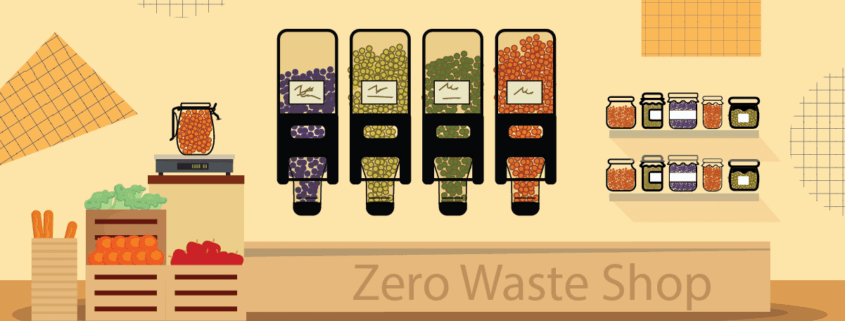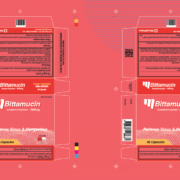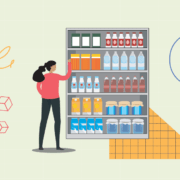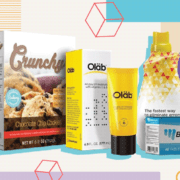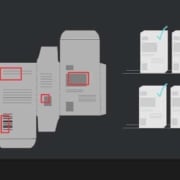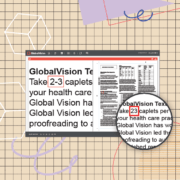5 Reasons “Packaging-Free” Stores Won’t Catch On
Date: July, 2019 | Category: Proofreading | Author: Ryan Szporer
Packaging will always have its drawbacks, but it remains a necessity, even in the face of what many might see as a potential trend in the making and threat to the industry: packaging-free stores.
In theory, the idea is great. Customers can bring their reusable containers to the store and fill them up with bulk items, reducing their carbon footprint on the environment in the process. However, in practice, there are a few hang-ups with the concept that must be resolved before it becomes widespread if the fad ever even gets to that point.
Here are five reasons why packaging-free stores won’t catch on.
1. What About Items that Require Packaging?
The obvious shortcoming of packaging-free or more-radical zero-waste grocery stores is that the concept isn’t necessarily compatible with every item on your grocery list. Frozen foods and dinners, which, for better or worse, have become staples in the everyday lives of consumers, are one example.
How about food articles that come individually wrapped as single servings for convenience purposes? Even if you’re buying food in bulk and then divvying it up at home, you’re still going to be wrapping it up in one way or another, right?
As a result, non-environmentally-conscious consumers may have a hard time getting on board with packaging-free stores. If they can buy all their groceries at a single store that sells packaged goods, they would have little motivation to take advantage of the trend.
2. The Inconvenience and Impracticality Factors
Again, packaging-free seems to cater to a specific demographic of people who are willing to make more of an effort and walk the extra mile to stay eco-friendly. In this case, though, that extra mile is walked with a huge supply of containers back and forth to the grocery store.
If you’re already going to lug your groceries back home, there is admittedly little excuse for not being willing to do the same with empty containers in the opposite direction to the store. However, how many containers have you seen that are big enough to hold an entire box worth of breakfast cereal?
That’s just one example, but the implication is clear: Even though containers specifically designed for breakfast cereals do exist, they’re designed more for storage than transport. The weight difference between them and the boxes they normally come in presents somewhat of a paradigm shift. Consumers who shop at packaging-free stores are likelier to buy smaller portions of their food each time, resulting in more trips to the supermarket. That costs more time and more resources.
Granted, by allowing consumers to buy custom portions, the goal is arguably to cut down on food waste, but it’s a double-edged sword.
3. Food Waste
Packaging isn’t designed simply as containers for food, but as a way to preserve it. For example, unwrapped cucumbers last an estimated five days on average instead of seven. That’s a 40% increase thanks to plastic packaging.
It turns out, however detrimental to the environment excess packaging is, food waste can be worse. In terms of greenhouse gases, that same cucumber actually emits 178 times more than packaging. Beef emits 370 times more than packaging. Ultimately some packaging is a necessary evil in order to prevent food waste and protect the environment.
On that note, how many people would actually be willing to buy their dairy products stored in the same receptacles as other people? With both freshness and sanitation likely being hang-ups for most consumers?
More than that, short of bringing your own box of cling-wrap to the store, is there a viable solution for wrapping and buying meat, like an entire pot roast for example, at one of these stores? Truth be told, it would kind of run counter to the entire concept… in more ways than one.
4. No Meat
For starters, the use of cling wrap and plastic, in general, is something packaging-free stores are seeking to prevent. More importantly, perhaps, meat as a product is antithetical relative to the mission statements of those zero-waste stores mentioned above.
As alluded to earlier, packaging, in spite of how the goal is to eliminate it, is actually seen as small potatoes when fighting global warming. A bigger problem is the depletion of forestry to make room for land to graze livestock. As such, both meat and dairy seem to jive with a huge portion of the population that live their lives in diametrically opposed fashion relative to the principal target demographic of stores such as these.
There’s obviously a market for stores that cater to a population made up largely of vegetarians and vegans. However, that market makes up a decisive minority. So, right off the bat, zero-waste grocery stores are pre-emptively handicapping themselves in any hypothetical bid to catch on to the masses.
Packaging-free stores can admittedly sell meat and milk, but, when state laws aren’t legally requiring them to package the products, the stores themselves are making exceptions. For instance, Vancouver’s Nada Grocery charges a refundable deposit for the recyclable packaging it uses for those items.
It’s obviously more of an eco-friendly solution than what you’d find at mainstream grocery stores, but it still effectively proves that going completely packaging-free just isn’t possible. It’s about being eco-friendly instead.
5. Important Info
Clearly, packaging has a role in today’s society. It’s not perfect and can be improved upon, but it still has multiple uses that cannot be ignored, including waste reduction, believe it or not.
Marketing is another. However long food items will be available to consumers, there will be companies inherently against removing packaging from their products. However, there’s more information on packaging besides branding. There’s also consumer safety and nutritional info, along with ingredient lists, all of which benefit consumers. It may not apply to everything, but it certainly does for items like pharmaceuticals or whenever common allergens become a potential issue.
All this info could admittedly be displayed in-store, but there is little substitute for having it readily available at home once the product has been bought. Companies would be opening themselves up from a liability standpoint should disaster strike, all based on what would amount to a gentleman’s agreement between themselves and consumers to improve the environment. That isn’t realistic.
Companies need to protect themselves even if only via fine print, which is why packaging will always be a factor. It can still be a positive one though if sustainable packaging catches on instead. When you think about it, sustainable packaging is actually more of a sustainable trend than packaging-free stores.
Firstly, sustainable packaging reduces the carbon footprints of companies and consumers alike. It also preserves food with new innovations consistently being made in that regard. Finally, it can convey critical product information more efficiently than if there were no packaging at all.
Most importantly from companies’ perspectives, sustainable packaging has been proven to increase bottom lines. Whereas packaging-free stores will always appeal to an environmentally conscious minority, sadly the majority will always go with packaging in one way, shape, or form. Making packaging the best it can be is the only long-term solution here.
Hoping to get rid of packaging altogether is akin to trying to stop smoking cold turkey. The heart is in the right place, but there are better ways to go about it, like a governmental intervention to incite further innovation on the part of packaging manufacturers.
The environment affects everyone and it should be treated as the huge issue it is. While a few packaging-free stores here and there catering to select demographics is a start, there’s work to be done by a lot more people. It’s a problem with a solution starts at the top of the food chain. No packaging is needed there, just proper leadership.
_________________________________________________________________________________________
Get your complete guide to meeting FDA labeling requirements here

